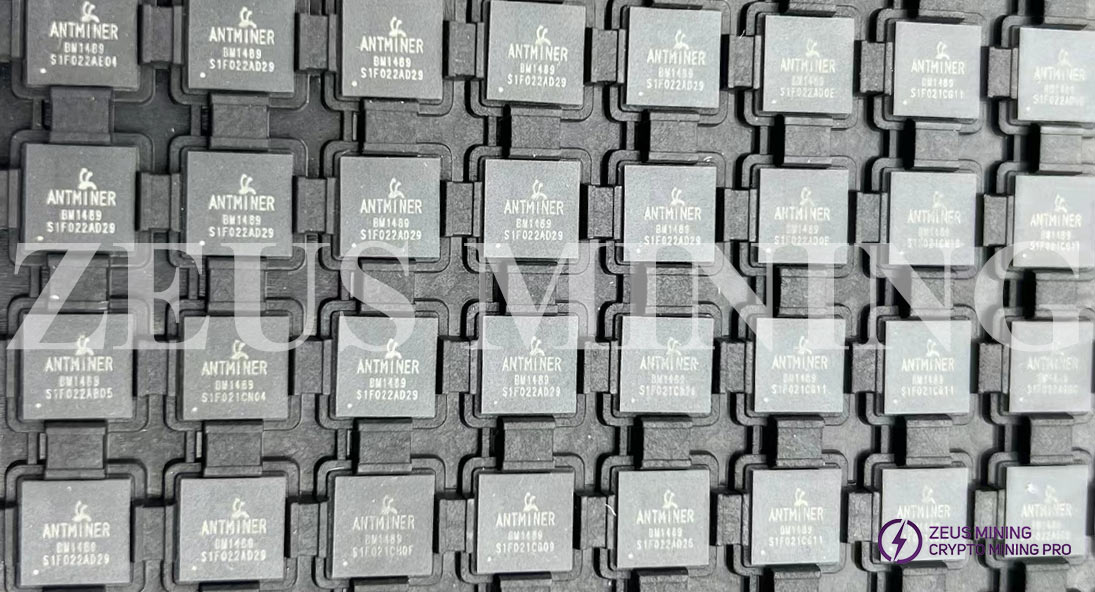


Bitmain's Antminer BM1489 ASIC chip is designed specifically for replacing faulty ASIC chips on L7 hash boards. Its high-performance and low-power consumption design offer miners robust hash rate support while efficiently managing operational costs. Leveraging Bitmain's advanced technology, the BM1489 ASIC chip ensures efficient and stable operation of Antminer L7 during mining, making it a highly sought-after mining tool in the market.

If our Antminer L7 hash board suddenly malfunctions, it could be due to a faulty chip. Replacing the vulnerable chip with an Antminer BM1489 chip quickly restores Antminer L7 to normal operation.
Detailed steps to replace the BM1489 ASIC chip:
1. Disassemble the miner's protective cover plate, take down the cooling fan at the air outlet, unplug all the corresponding cables, and place the abnormal hash board on an insulating pad.
2. Remove the heat sink and wipe away the dust on the board with a dust cloth dipped in circuit board cleaning solution.
3. Locate the faulty ASIC chip and apply flux around its pins.
4. Use a hot air gun, set to speed 2 gear and a temperature of approximately 400℃, heat until the solder melts, and carefully remove the faulty chip with tweezers.
5. Clean the residue from the solder pads, then cool the hash board using a heat dissipation fan.
6. Align the pins of the new BM1489 ASIC chip with the solder pads, apply a small amount of flux, solder the chip back into place, and press it down with tweezers for a few seconds to ensure a secure connection.
7. Allow the hash board to cool, clean it, apply thermal grease, and then reinstall the heat sink.
8. Reassemble the miner and power it on for testing.
If the entire hashboard fails, it is recommended to replace it directly. Please refer to the article Instructions for quickly replacing the Antminer L7 hash board.
Replacing faulty ASIC chips in Antminer L7 is crucial for maintaining peak performance. Firstly, it immediately restores the miner's full hash rate, ensuring uninterrupted mining efficiency vital for high-yield miners. Secondly, new ASIC chips often offer lower energy consumption and higher stability, reducing operational costs, extending the miner's lifespan, and mitigating potential losses from failures. Maintaining optimal miner performance is essential for staying ahead in the competitive cryptocurrency mining market.
Dear Customers,
Hello, April 4, 5 and 6, 2025 (GMT+8) are the traditional Chinese festivals - Qingming Festival. Our company will suspend shipments during these 3 days and resume shipments on April 7 (GMT+8). We are deeply sorry for the inconvenience. Thank you for your understanding and support.
Best wishes,
ZEUS MINING CO., LTD